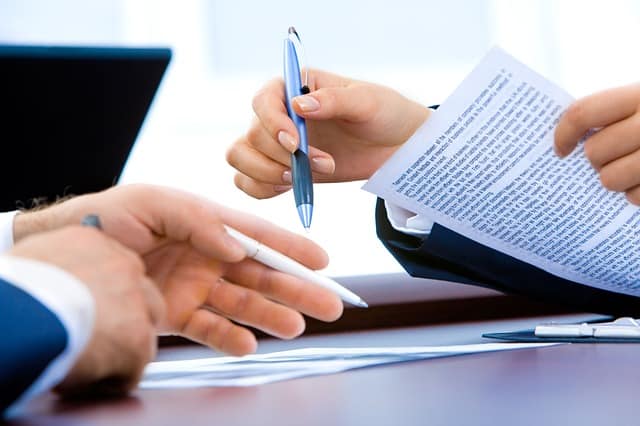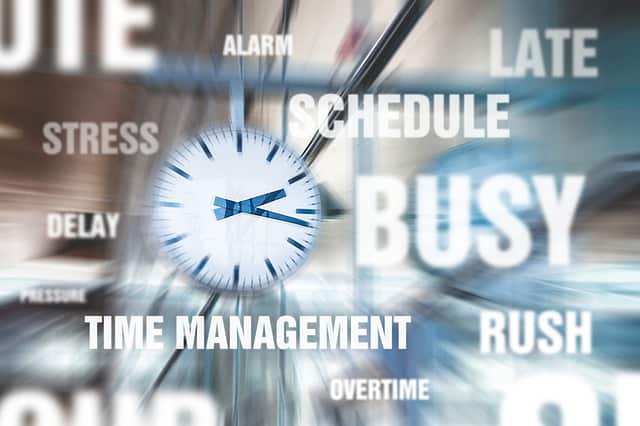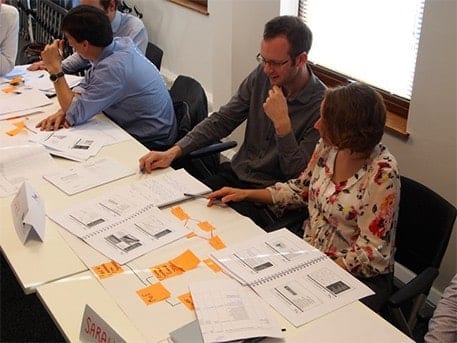A powerful tool in your arsenal, the ‘project management meeting’ is, however, fundamentally misunderstood. And neither is this gathering of the project team always used wisely and to its full potential.
So just how can you get more from each and every project management meeting?
The meeting room setting – standing room only isn’t always a bad thing
In some ways, the traditional meeting setting is one that needs to be busted. The idea of everyone sitting behind a table, frantically scribbling notes or sitting looking bored and frustrated is one that continues to perpetuate.
Sometimes the best meetings are those that are short and snappy but still get through a large volume of work. A meeting doesn’t always mean a formal sit down affair, although there is still a place for this kind of meeting.
Conducting and managing shorter project meetings means a lot more preparation and activity beforehand, as well as in-between one meeting and the next.
Do you NEED a project meeting?
Is the timing right for the meeting? Is a face-to-face meeting needed when there are other options?
According to American research, 39% of those who responded to the survey admitted dozing off in a meeting. Whilst there are many reasons why this is the case, boredom is clearly a factor.
This doesn’t mean that a project meeting has to be like a circus act, with something happening in every corner of the room but it does beg the question, is a meeting necessary, at this time and in the same format that has always been followed?
Technology gives us many options when it comes to communication. From round-robin emails to summary project e-newsletters, to conference calls and more, it may be the traditional meeting of gathering everyone in one room at the same time is not the best format.
Likewise, the extent to which we communicate real-time project information has also changed, with specialist project management software allowing team members to input and update information, data and progress as it happens. It may be that unless you see there are issues or bottlenecks in project progress, that a traditional meeting is not necessary.
If you are confident that you do need a meeting and the time is right, you need the rest of our tips.
KEY POINTS
- Consider alternative formats for meetings and catch-ups
- Consider if the timing of the meeting is right
WHO needs to be there?
Now that you have decided that you do need a meeting, you need to make a decision about who really needs to be there.
Project management training will always emphasise the importance of communication, a lynchpin of successful project management. Real-time information and data mean everyone is on the same page – or they should be.
However, there will always be glitches that need ironing out, issues that need discussing and challenges to overcome on a project but that doesn’t mean the whole project team need to be dragged to the meeting room. In fact, it can mean quite the opposite.
Deciding who really needs to be there is one way of making project meetings more effective. But you need to be clear on how action from the meeting will be disseminated amongst the rest of the team.
KEY POINT
- Consider who needs to be at the meeting and why

Agenda and circulate
Research suggests that half of all meetings that take place on a certain project is time wasted – why? Possibly because the agenda for the meeting is not set and circulated beforehand.
The agenda doesn’t have to be overly detailed or formal – a simple email agenda circulated amongst your group would work just as well. A great project meeting is one that is organised beforehand, with a clear direction that spells out the need for the meeting.
An agenda also;
- Ensures people come prepared with the information needed to the meeting, preventing stalling and frustration as someone darts off to get the latest budget figures and so on.
- As the agenda is circulated, make sure that the responsibilities of key people are flagged for their attention.
- Highlights key areas of the project that are to be discussed allowing sub-teams to arrive prepared.
- Set a date by which feedback or items for the agenda need to be added.
- Manage the list of items, considering which can be discussed another time or another way.
- Rule out ‘any other business’ or items added on the day/at the meeting.
KEY POINT
- The agenda of a meeting is set beforehand, stick to the items listed.
Manage by the clockmeeting, the challenge is to keep it on track and to keep it productive.
We have all sat through meetings that last for far longer than they should or need to. In other words, a project meeting needs to end with a clear productive slant on how the project is being driven forward.
There are many hints and tips on how to manage effective meetings but the clock is a great tool for pushing the agenda forward. However, there needs to be a dose of realism about timing a meeting because sometimes, thrashing out issues is needed.
As is using time to manage who contributes to a meeting. Some people have the confidence to start a discussion, to disagree with a colleague and we also know of people who seem to dominate meetings, using a thousand words when one would have done.
For project management to be a success, everyone needs to contribute and play their part, an ethos that needs to be applied to meetings so that they are effective and useful. If you have a ‘talker’ who drowns out others that you need to hear from, use time management as a means of bringing focus to the discussion and for bringing other voices to the debate too.
KEY POINTS
- Start the meeting on time.
- If people are allotted presentation time, they are to keep to the number of minutes given to them.
- Make it clear that everyone is expected to arrive on time too, a common reason why meetings overrun are late arrivals.
- Be realistic about the time needed for the meeting and the agenda in question – if there are serious or critical issues to discuss it may be that a 30-minute meeting is not enough.

Use the ‘Parking System’
As with any meeting, there will be issues raised that need to be dealt with but the meeting in question may not be the right place to do it.
The Parking System is where the meeting chair ‘parks’ issues that need to be dealt with either at a future project meeting or in another way. It is a means of acknowledging when an important issue has been raised and how this will be dealt with and moved forward.
Using the Parking System on its own won’t yield the results you need thus you need to ensure there is a scheduled Follow Up for these sorts of issues (see the next point).
KEY POINT
- The Parking System is great for acknowledging points raised by your team and can be a tool for managing an already busy meeting.
The ‘Follow Up’
A project meeting will bring many issues to the surface, just as many as it resolves in fact. The nature of project management is that once you have a solution to one issue, another arrives for your consideration or, as is commonly the case, by solving one issue, another is created.
The need for productive, efficient and effective project meetings is such that some of these issues – the ones deemed vitally important at that time as per the agenda – will be dealt with but the other issues starting to take centre stage from the wings need to be followed up.
If you using the Parking System you need the Follow Up system. And this is how it works;
- With notes made on issues that have been raised outside the scope of the meeting, you need to connect with the team member to discuss the issue.
- This may mean the item is
- placed on the agenda for a future meeting
- resolved with discussion in another arena.
- At the next meeting, consider adding an agenda item that quickly recaps on the parked issue’s and how they were resolved/followed up.
KEY POINT
- Follow up is an essential part of the Parked System- without it, parked issues are no more than a note on a piece of paper.

Avoid surprises
Projects are cancelled, projects are put on hold and projects are given the green light at meetings, just as other important issues are raised and major decisions made.
A project management meeting is about bringing your team together to discuss, debate and resolve issues and yet, all too often, they are used as a platform to present vital pieces of information that surprise staff.
It is time-consuming to inform people individually beforehand or to talk to specific people about a certain issue thus it’s tempting to ‘do it all in one go’ at a meeting. But no project meeting should spring surprises.
KEY POINT
- Whilst project meetings are important information platforms, they shouldn’t be used to disseminate important pieces of information that side-swipe the project team.
Be organised
There are many qualities that a project manager needs to develop, something that the team at Parallel Project Training have discussed previously on the blog.
Organisation is key, not just IN the project but around it too, with project meetings being a key tool in this organisation and management process. Keeping accurate records of what was said, actions that need to be taken along with ‘parked issues’ and those that need following is important.
It is from these notes that you will arrange the next agenda too and is also vital for making sure that the smaller issues don’t get forgotten either.
Minutes of meetings don’t have to be long, wordy affairs. Many project managers use a plan of action, placing minutes into a table format for circulation. With one column summarising the discussion under the related agenda heading, a second column designates what needs doing and by whom.
As well as individually circulating minutes of the meeting, it can also be placed centrally to the project management system you are using. Don’t forget that meeting records will form an important channel of communication throughout the project lifecycle.
KEY POINTS
- Make your own project meeting notes as well as the ‘official’ minutes of the meeting
- Circulate minutes of the meeting as soon as possible after the meeting
Sum up
The best meetings are those that finish with people feeling invigorated, ready to take on the next stages of the project. They will walk away with a list of things that need accomplishing, as well as an overview of the project and its current state.
But meeting participants only really get this if the meeting is effectively summed up.
KEY POINT
- Summarise the meeting with key take away points
End on time
And finally, ending the meeting on time is a clear sign that the project is on track and ready to progress. How many meetings have an outcome that says that?
However, there needs to be a balance. If a project is clearly struggling and not making the progress that it should, a meeting is a tool by which the key issues are identified – and this can take time.
Clearly, a snappy half-hour meeting that whistles through several agenda items may not be the right format all of the time and as a project manager, the team are relying on you to manage the process effectively.
KEY POINT
- Meetings can be used to review a project as well as move it forward and it is important to understand the balance between driving it forward but also taking the time to discuss key issues.